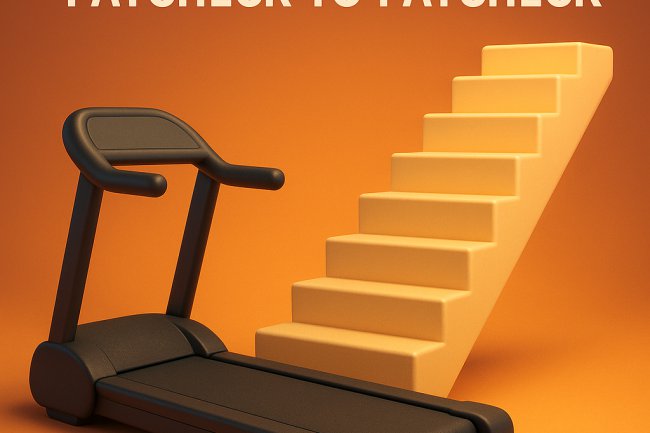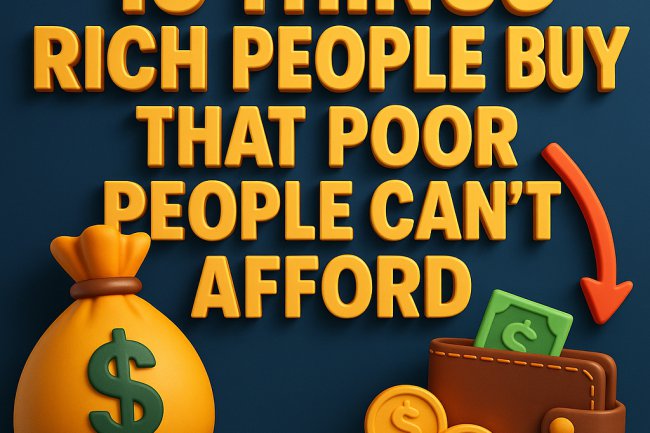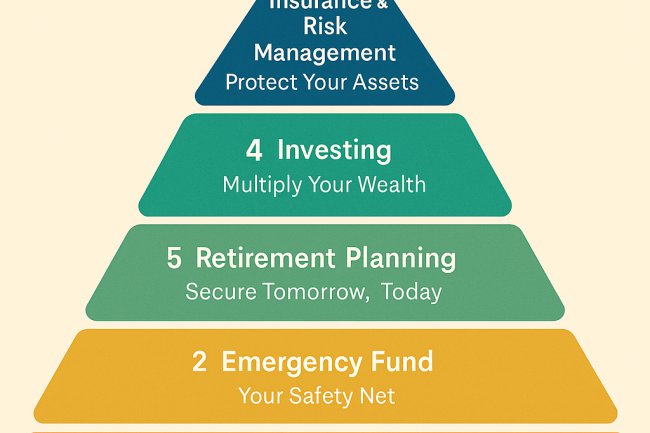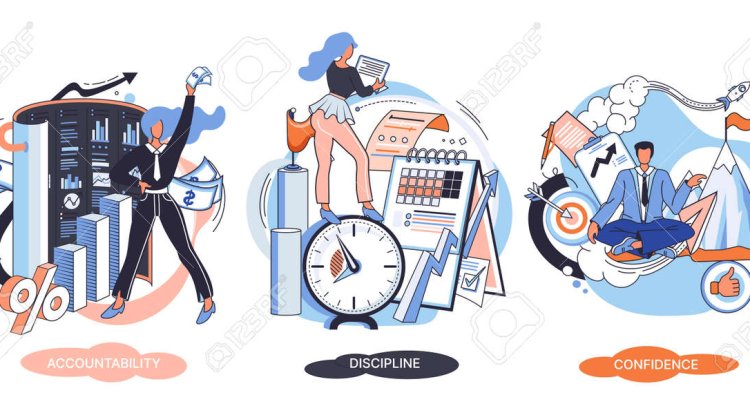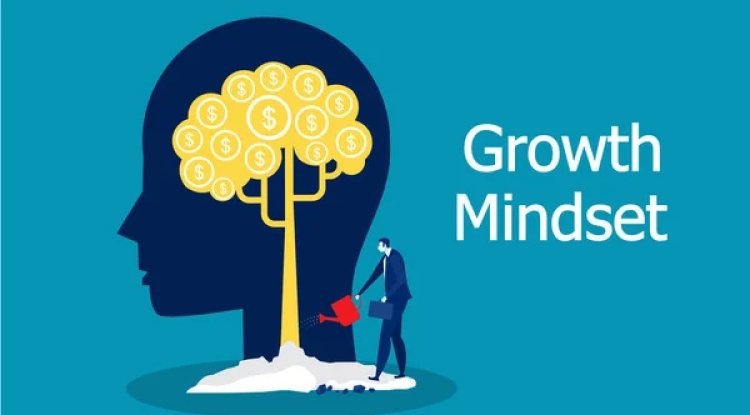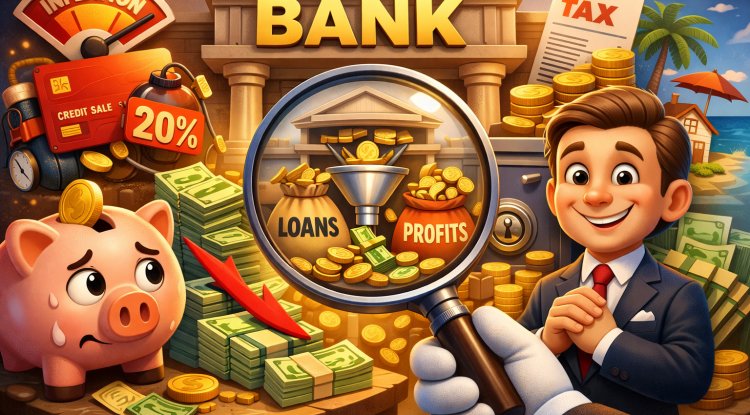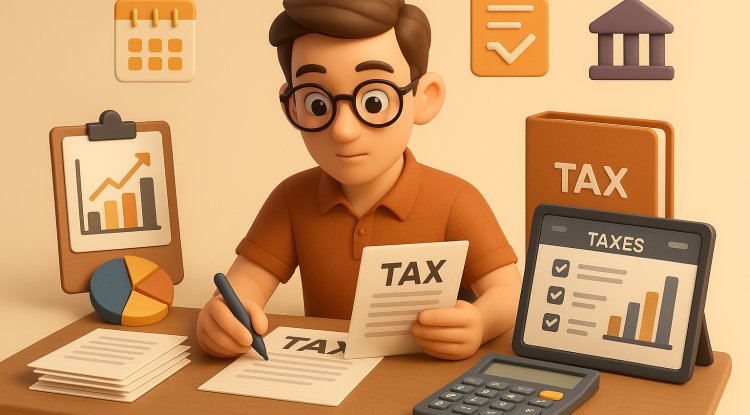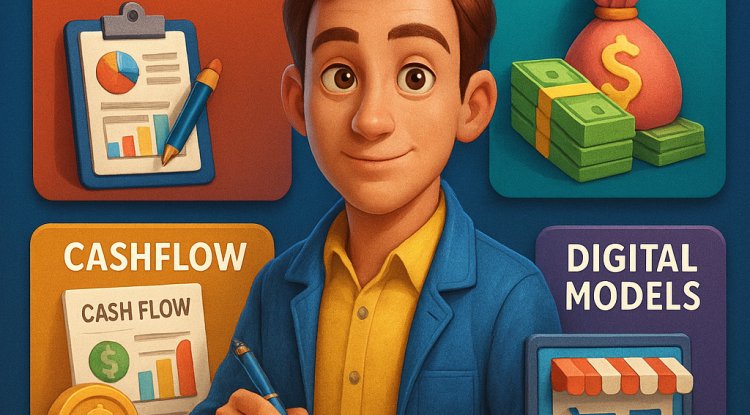The 7 Dimensions of Poverty: Why Money Alone Doesn’t Tell the Full Story
Poverty is more than lack of income. Discover the 7 dimensions of poverty—income, health, education, living standards, work, inclusion, and security.
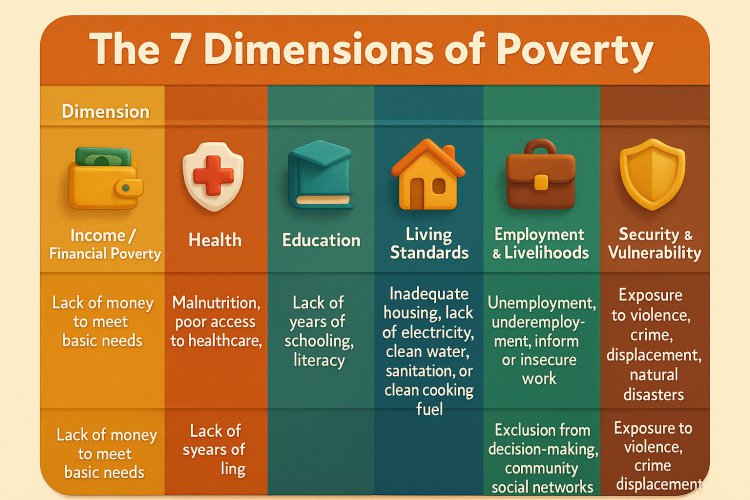
Introduction
When people think of poverty, the first image that comes to mind is usually a lack of money. Indeed, financial poverty is real: if a family can’t afford food, housing, or healthcare, survival itself becomes a struggle.
But here’s the truth: poverty is multidimensional. It cannot be reduced to just an empty wallet. You could have a family earning above the international poverty line of $2.15 per day per person (World Bank’s extreme poverty measure) and still be trapped in poverty because they lack healthcare, education, or secure housing.
This is why the Multidimensional Poverty Index (MPI), developed by the UNDP and Oxford Poverty & Human Development Initiative, goes beyond income to measure 7 core dimensions of poverty.
Let’s explore these dimensions in detail.
1. Income / Financial Poverty
This is the most recognized dimension. It looks at whether individuals have enough income to cover basic needs.
-
Extreme poverty line: $2.15 per person/day (about $65/month).
-
Moderate poverty line: $3.65 per person/day.
-
Higher poverty line: $6.85 per person/day (used in upper-middle-income countries).
For example:
-
A family of 4 living on $200/month total falls below the $2.15/day threshold, placing them in extreme poverty.
-
Even if they earn $1,000/month, if they live in a city where rent, transport, and healthcare costs are high, they may still experience relative poverty.
Financial poverty is real, but it is only one piece of the puzzle.
2. Health
Money can’t buy good health if there are no hospitals, clean water, or nutritious food. Poverty often shows up in poor health outcomes such as:
-
Malnutrition and stunted growth in children.
-
Lack of access to affordable medicine.
-
High maternal and infant mortality.
-
Low life expectancy (many poor countries average 55–65 years, vs. 78 years in the U.S.).
For example, in sub-Saharan Africa, families may spend less than $50/year per person on healthcare, compared to $12,000/year in the U.S.
Health poverty doesn’t just reduce life expectancy—it also traps families in cycles of debt when medical bills wipe out savings.
3. Education
Education is one of the strongest escape routes from poverty. Yet millions of children worldwide don’t complete primary school.
Key challenges:
-
Lack of schools in rural areas.
-
Families unable to afford school fees, uniforms, or books (even when education is “free”).
-
Children dropping out to work and support the household.
Why it matters:
-
Each additional year of schooling can increase future earnings by 8–10% (World Bank).
-
University graduates in Kenya, Nigeria, or South Africa often earn 3–4 times more than peers without higher education.
Without education, poverty passes from one generation to the next.
4. Living Standards
Living standards include access to:
-
Safe housing (not overcrowded or unsafe).
-
Electricity (nearly 600 million people in Africa still lack it).
-
Clean water and sanitation (2 billion people globally don’t have safe drinking water).
-
Clean cooking fuel (millions rely on firewood, causing health hazards).
Example:
-
A family might earn $500/month, but if they live in a mud house without electricity, toilets, or clean water, they are still in living standards poverty.
This dimension shows that income poverty ≠ development.
5. Employment & Livelihoods
Employment isn’t just about having a job—it’s about having a secure and decent job.
Problems faced:
-
Many people in low-income countries work in the informal sector (street vending, day labor, small farming).
-
Jobs often pay less than $5/day with no contracts, insurance, or pension.
-
Even in high-income countries, gig workers may earn but lack long-term stability.
Unemployment or insecure work keeps families vulnerable. A single crisis—illness, job loss, or inflation spike—can wipe out progress overnight.
6. Social Inclusion & Participation
Poverty also means being excluded from society.
-
Lack of political voice.
-
Discrimination due to gender, ethnicity, or disability.
-
Inability to participate in community decision-making.
-
Lack of access to networks that provide jobs, loans, or support.
For example:
-
Women in many developing countries own less than 20% of land, even though they provide up to 60% of agricultural labor.
-
Minority groups often face exclusion that keeps them poor regardless of income levels.
True wealth is about dignity, voice, and belonging.
7. Security & Vulnerability
Poverty makes people more vulnerable to:
-
Violence and crime.
-
Political instability and displacement.
-
Natural disasters like floods, droughts, or hurricanes.
-
Economic shocks like inflation or currency devaluation.
Example:
-
A family with $5,000 savings may lose it all if war forces them to flee.
-
Farmers may fall back into poverty if drought destroys crops.
Without safety and stability, escaping poverty is almost impossible.
The Bigger Picture: Why Dimensions Matter
Traditional poverty measures focus only on income. But by using the 7 dimensions, governments, NGOs, and businesses can design better solutions:
-
Cash transfers help with income.
-
Universal healthcare fights health poverty.
-
Free education programs break generational poverty.
-
Infrastructure projects (electricity, water, roads) raise living standards.
-
Job creation & microfinance reduce employment poverty.
-
Community inclusion programs build dignity and belonging.
-
Security policies protect the most vulnerable.
Fighting poverty requires a holistic approach.
Wealth Insights Perspective
At Wealth Insights, we believe that true wealth is multidimensional.
In Africa, for example, many households might earn $300–$600/month—above the extreme poverty line—but remain poor because they lack healthcare, electricity, or education opportunities.
Globally, even in high-income countries, relative poverty exists when families cannot meet modern living costs despite earning above $2.15/day.
Real financial freedom comes when people are secure across all 7 dimensions.
Conclusion
Poverty is more than lack of money. It is the lack of health, education, safe housing, employment, dignity, and security.
By redefining poverty as multidimensional, we recognize that solving it requires more than financial aid—it requires systemic change across all areas of human well-being.
As we move into 2025 and beyond, let’s stop asking: “How much do people earn?”
Instead, let’s ask: “Do people have access to the life essentials that allow them to thrive?”
“Poverty has many faces. At Wealth Insights, we are committed to shining light on all dimensions of wealth and well-being. Follow us, share this post, and let’s push for solutions that build real wealth across Africa and the world.”
What's Your Reaction?







